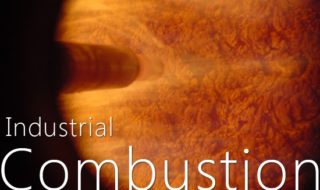-
Industrial Combustion Journal: Paper published
Date posted:
-
-
-
Post Author
Lucy StrakerIFRF Administration & Communication Coordinator
-

The latest paper in the Industrial Combustion Journal is now available to download for free.
Read Naresh K Aluri and Siva PR Muppala’s new paper – “RANS and LES of turbulent premixed flame dynamics for gas turbine combustion systems” here.
Abstract:
Methodical design of gas turbine premixed turbulent combustion systems for fuel flexibility is a necessity for higher efficiency and operational flexibility, due to the use of vast range of fuel types and fuel mixtures. Different fuels/fuel mixtures have different reactivity and varied molecular transport characteristics. The central theme of this paper is numerical investigation of these effects, along with the dynamics of turbulent premixed high-pressure flames. We studied these dominant factors in two different geometrical configurations, a cylindrical dump combustion system and an industrial gas turbine single burner combustion system.
Here, we chose the algebraic flame surface density model as subgrid scale reaction closure for LES approach in conjunction with three widely employed turbulence models for dump combustor (F-1 configuration). For the second, the flame stability of a swirl burner with mixing section (F-2 configuration) for variation of fuel types is analysed in RANS for two different fuel profiles, a uniform fuel profile and rich core-lean outer. We investigated flame dynamics in conjunction with the vortex breakdown point. This phenomenon is visualized in the context of the Lewis number variation for the rich core-lean outer.
Numerical validation with available experiments are made for two main combustion quantities, flame brush thickness and mean flame position for the dump combustion system. For the swirl burner, only the numerical results are presented with potential reasoning for change of flame stabilization location for variation of Lewis number (for higher hydrocarbons) in the case of rich core-lean outer profile.
